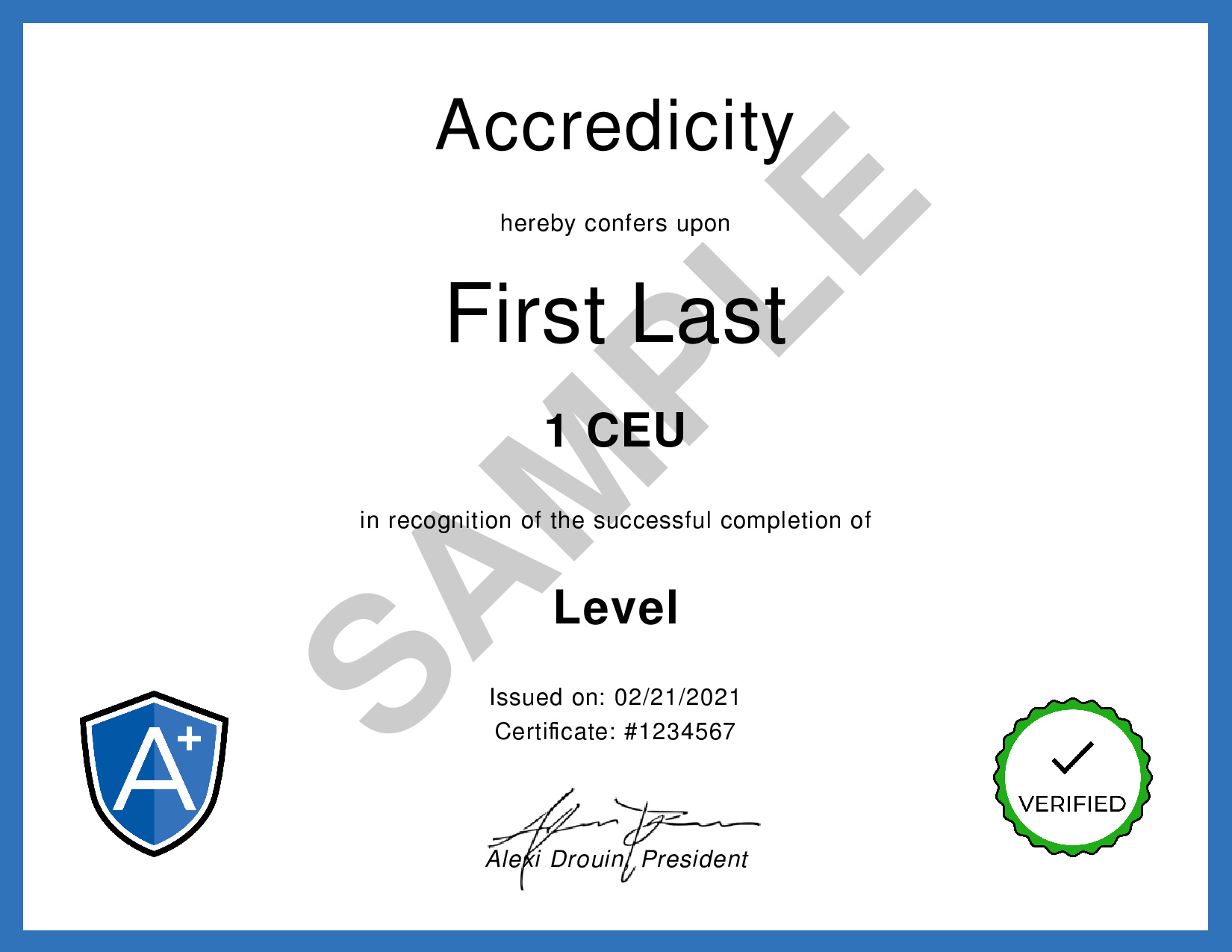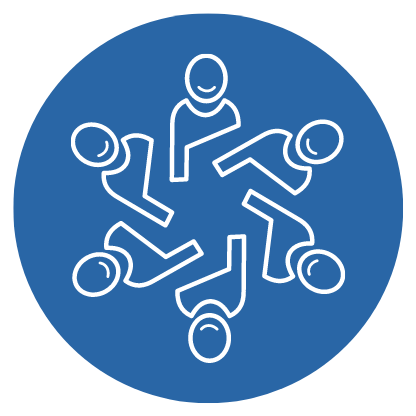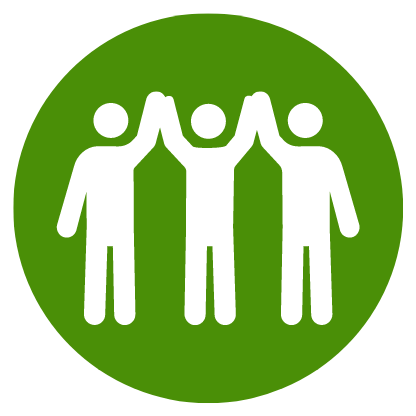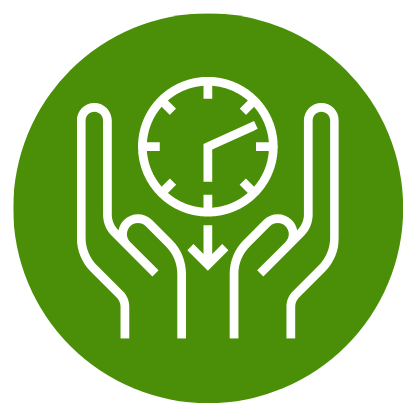Team Building Without Time Wasting | Marshall Goldsmith
Reference: Marshall Goldsmith. (2014, September 23). Team Building Without Time Wasting: Coaching For Behavioral Change [Video]. YouTube.
We Make Your Education Count

Get the Credit You Deserve and Become the Most Attractive Job Candidate by Earning and Posting A+ Badges to Your Linkedin Profile.
Sign Up to Get Started at Accredicity
|
Discover the secret to successful team building without wasting time: Coaching for behavioral change. In this video, Marshall Goldsmith introduces a powerful team building process called 'Team Building Without Time Wasting'. This efficient, effective and quick process involves having team members evaluate their team on a scale of 1-10 for two separate questions. After identifying the gap between how well they are doing and how well they need to be doing, each team member is asked to contribute two behaviors that could help close the gap. The team then prioritizes one behavior and, with a three question follow-up process, they measure their improvement over time. This process is proven to be more effective than traditional team building activities. Learning Outline1. Get up in front of the team with two separate pieces of paper and evaluate teamwork on a 1-to-10 scale. Instructional ContentTeam building is an essential part of any successful business or organization. However, the amount of time it takes to build a team can be a major obstacle. In this video, we explore a method for team building without wasting time. This process is incredibly quick and efficient, and it works. The process begins with a team evaluation. Every team member is asked to rate how well the team is doing on a scale of 1-10, and then how well the team needs to be doing in order to be successful. Typically, teams are doing a 5.8, but wish they were at an 8.7. The next step is for everyone to write down two behaviors that they believe will improve the quality of teamwork. Then, the team will prioritize and come up with the one most important behavior that everyone should focus on. Finally, team members will have brief, one-on-one conversations with each other focused on the behaviors they need to improve. The focus is always on the future, and feedback about the past is not allowed. This process should be repeated once a month in order to measure progress and ensure team building is successful. Team building without time wasting is a great way to build an efficient, effective team quickly and efficiently. This process allows teams to identify the behaviors that need to be improved, prioritize them, and then measure progress. The result is an improved team that is better prepared for success. Productivity
|

Team building can be hard work, but it doesn't have to waste your time! This process is a great way to help a team work together better without taking up too much time. It starts by having everyone write down two behaviors that could help the team work better. Then everyone shares the behaviors, and the team comes up with one important behavior to focus on. Each team member talks to every other team member about that behavior once a month and gets ideas to help improve it. This process is like a game of tag - it's positive, simple, focused and fast and it really works! Video Quotes"It is incredibly quick, it's efficient, and it works." - Marshall Goldsmith Related Quotes"When it comes to coaching, it's really about understanding people and appreciating them." - Ellen Kossek, Professor, Management and Human Resources, Michigan State University "When teams work together, it’s really about understanding the dynamics that are driving behavior." - Jeff Hyman, Chief Talent Officer and Co-Founder, Strong Suit Executive Search "People respond to positive reinforcement, and it's important to recognize and reward their successes." - Leslie A. Perlow, Professor, Harvard Business School Competencies1. Team Building Learning Outcomes1. Analyze the cost of team building activities on a team’s time. Sample Answers1. This video discussed a process of team building without wasting time, which involves having team members evaluate the team on a 1-10 scale on two questions, writing down two behaviors that could help improve the team, and having team members give each other ideas to help improve their individual behaviors. The process also includes follow-up and measurement to ensure the team's progress. 2. I've learned that team building without wasting time is an efficient and effective way to improve a team's performance and communication. By evaluating the team's current standings and having team members give each other ideas on how to improve their behaviors, the process helps close the gap between the team's current performance and their desired performance. 3. This process is beneficial because it does not waste time and it does get results. It is also a cost-effective way to improve a team, as it does not involve shipping people off to the woods for a week. The process also encourages team members to be accountable for their actions and encourages follow-up and measurement to ensure the team's progress. Marshall GoldsmithMarshall Goldsmith is an executive coach and the author of more than 40 books, including the New York Times bestsellers MOJO, What Got You Here Won't Get You There, and Triggers. He has worked with over 150 CEOs and their management teams in a wide variety of industries and sectors. He has been recognized as one of the top 10 executive coaches in the world by Forbes and as one of the top five executive coaches by Fortune. He is a Distinguished Professor of Leadership at the UCLA Anderson School of Management and the founder of Marshall Goldsmith Group, an executive coaching and consulting firm. He is an expert on team building without time wasting because he has extensive experience in coaching executives on how to improve their behavior and get results without wasting time. Marshall Goldsmith is also affiliated with the Marshall Goldsmith School of Management, which specializes in executive coaching and leadership development. Marshall Goldsmith Learning DesignTeam Building, Teamwork, and Time Management are all essential competencies for any individual looking to increase their productivity. They are important for any individual looking to work more efficiently, effectively and collaboratively with others. Team Building helps individuals to understand how to work collaboratively with other individuals and teams. It teaches individuals how to effectively communicate their ideas and solutions, overcoming any potential obstacles. Teamwork allows individuals to leverage the strengths of others and create a collaborative working environment that is more productive. Lastly, Time Management helps individuals to manage their workloads in a way that is most productive, allowing individuals to prioritize tasks and deadlines. Overall, these three competencies are essential for any individual looking to increase their productivity. With the use of frameworks and pedagogies, students can learn how to effectively build these competencies and become more productive. AssessmentQ: What is the first step in the process of team building without time wasting? Answer: B. Writing down two behaviors QuestionsCommon Hypothetical Questions 1. What would be an example of a behavior that could improve team quality? Real-Life Examples and Scenarios 1. How have you seen this team building process applied to a real-world situation and what were the results? KeywordsTeam Building, Behavioral Change, Team Building Without Time, Coaching For Behavioral Change, Improve Quality Teamwork, Listening Recognition Goals, Positive Simple Focused Fast, Feedback Past, Follow Up Measurement Discipline Facts1. Team building without time wasting is an efficient process that works quickly. Trends1. Team building without time wasting is an efficient process that works quickly. SourceThis learning instructional guidance was formulated using the GPT-3 language model created by OpenAI. ShareTeam building without time wasting - a fast, efficient process that works! Get up in front of the team & evaluate how well they're working together on a scale of 1-10. Identify key behaviors to improve. Practice feedforward & follow-up monthly. #Teambuilding #Efficient #Results #Feedforward #Followup :-) @Accredicity |








 21 Creds - Productivity
21 Creds - Productivity


